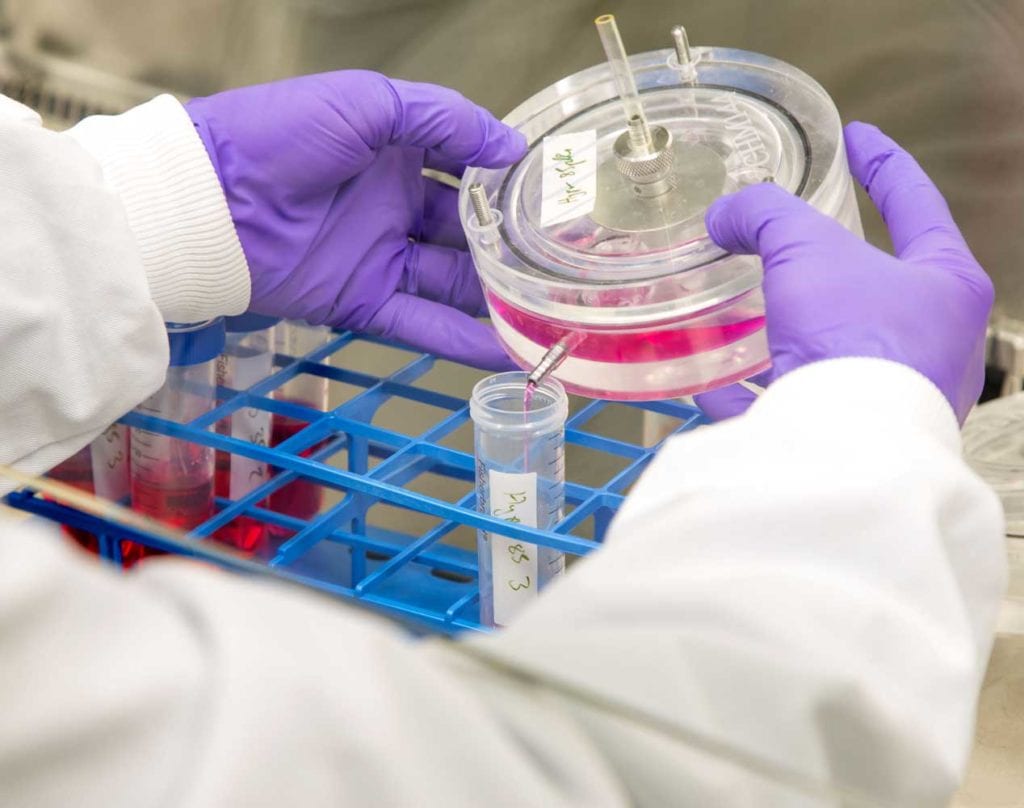Tobacco Reporter: What drew you to science, and why did you choose to work in the tobacco industry specifically?
Linsey Haswell, clinical research scientist: I’ve been interested in science since I was a child. I remember going to visit natural history museums with my mum when I was little and being fascinated by the exhibits, and my dad reminded [me] recently that once I started to study science in secondary school, I had a periodic table pinned up on my wall. So I had a real interest in science before I realized you could make a career out of it. Until I saw a job advertised by BAT, I hadn’t thought of the tobacco industry as a career path. Then I started to read about the work and the science that BAT did, and when I went to the job interview, I really liked the facilities at the R&D hub in Southampton and how passionate and enthusiastic the people were about their work. I enjoy the variety my job offers and the fact that two days are rarely the same. I have spent 15 years in the preclinical team in the lab growing cells, but I equally enjoy engaging with people and communicating the science and work we do in R&D.
Emma Cheung, biological platforms scientist: I have always enjoyed science, and following chatting to my A-level biology teacher, I decided to apply for pharmacology courses at university. As part of my undergraduate degree, I undertook a year in industry and came to work at BAT, Southampton. I really enjoyed my year, the science that BAT was doing and the focus on in vitro work. Following my graduation, I was offered a temporary contract in the team and then a permanent contract, and I’m still here 13 years later.
Summer Hanna, principal science manager in the new sciences department: I didn’t seriously consider a career in science until I was approached by a professor during my first year of university who suggested I consider majoring in chemistry. Once I had the opportunity to take part in undergraduate research, I developed a passion for better understanding the world around me through science. I chose to work in the tobacco industry partially by chance. While I was in graduate school at Wake Forest University, there was a person in my adjoining lab who was working on their Ph.D. part time while working full time at R.J. Reynolds, so I learned a little about the company as a Ph.D. student. We wound up sitting next to each other at graduation, and he mentioned that there were opportunities in their summer internship program as I was still looking for a job. I thought it would be a good way to gain career experience, applied and was offered an internship in analytical research. I was a little apprehensive, but shortly before I started, a professor said to me, “You’ll be pleased at the quality of research that goes on there,” and it turns out he was right. I’ve had the pleasure of working with really fantastic scientists throughout my career, and I’ve always appreciated the welcoming culture within the industry. Colleagues both inside and outside BAT invest in the development of early career scientists, and there are lots of [ways] to get involved externally through technical organizations like CORESTA. It’s a great environment in which to build your professional network.
Anais Hoffmann, analytical scientist: I was interested in science from a young age and was drawn to physics. I remember collecting anything to do with planets and space as a child—and then getting into chemistry. The decision to go into science was made by discovering forensic chemistry, which is a fascinating area. I was drawn to the tobacco industry for its vastness in terms of products and in terms of scientific capabilities. All my experiences were very complementary—I have a background in forensic science and biophysics—and think it was very helpful to me.
Cristelle Antunes Santos, toxicologist: Science was the only option on the table for me. It was a natural choice from a really young age.
Isn’t it an exciting world right now? Nowadays, we have so many innovations in the market that give consumers a greater choice than before. As toxicologists, we conduct risk assessments, generate toxicological limits and take decisions about consumer products.
BAT has exceeded my expectations in both the quality of the science produced and the career opportunities available.






























